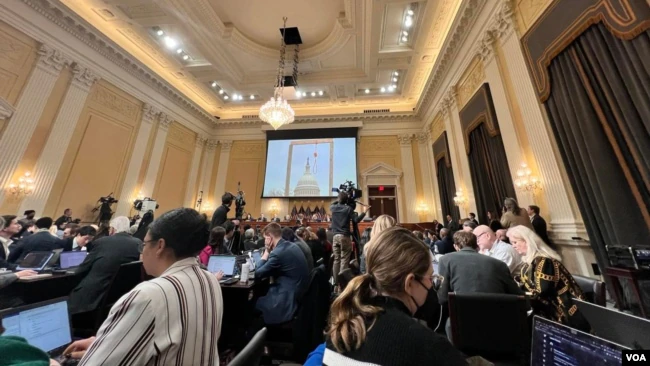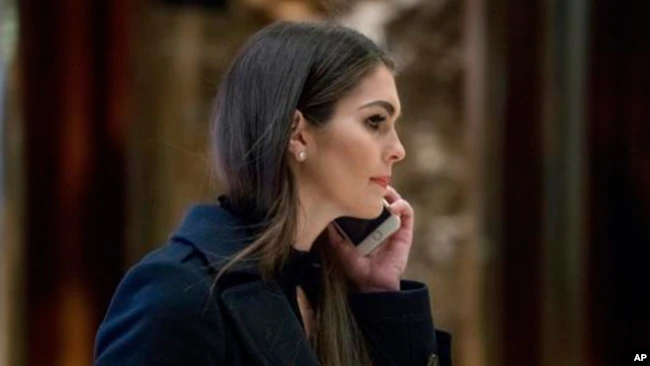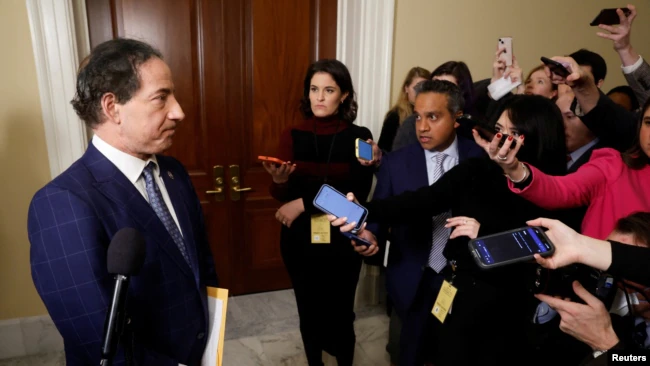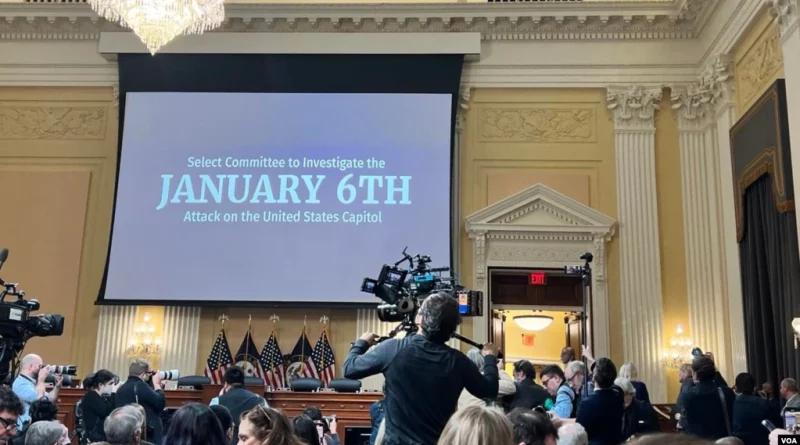Trump, Eastman, “some other personalities”: how the last committee meeting ended on January 6
Trump, Eastman, "some other personalities": how the last committee meeting ended on January 6
The House Select Committee on Investigations, known in American sources as the 1/6 Committee, held its last, tenth meeting on January 6. In a few weeks, the majority in the lower house of Congress will go to the Republicans, who have long promised to abolish it. Even if they decided not to, two key players are out of the committee – Republican lawmakers Liz Cheney and Adam Kinzinger are not part of the next Congress.
The committee has interviewed more than a thousand witnesses behind closed doors in its year and a half and released interviews with some of them. In addition, it has invited several dozen people from a variety of professions – officials, police officers, White House staff, lawyers, and election commissioners – to testify in open hearings. There were, however, those who neglected to respond to subpoenas – former White House leader Donald Trump himself, his chief of staff Mark Meadows, and some members of the lower house of Congress.
“Voice of America” visited the committee meeting and on the sidelines of Congress, highlighting the five most key findings and finding out from committee member and former manager in Trump’s second impeachment process, Democratic Congressman Jamie Raskin, a curious detail that illustrates his approach to the investigation and its subjects.

1. All eyes on Trump
As expected, the members of the January 6 investigation committee believe it is reasonable to recommend to the U.S. Department of Justice that the 45th President of the United States, Donald Trump, be held criminally responsible. There are only four counts: obstruction of official procedure, conspiracy to defraud the United States, conspiracy to give untruthful testimony, and “inciting,” “aiding,” “aiding or abetting” a riot.
During the hour-and-a-half-long meeting, the committee members once again recalled what they had learned in their year-and-a-half of work.
Thus, the head of the White House at the time, according to the information gathered by the investigators, carried out extensive work on several fronts. He was encouraging his supporters, urging them to “fight like hell,” while also devising a plan to disqualify some electors in states in which he failed to get a victory over rival Joe Biden. Donald Trump also persuaded local officials to “find” the missing ballots for his victory, pressuring the Justice Department leadership there to allow allegations of voting irregularities without conclusive evidence to proceed. According to committee members, based on interviews with officials, his message was, “just say the allegations of irregularities were confirmed, and I and the Republican congressmen will do the rest.” In another direction, Trump and the lawyers working with him privately tried to convince Vice President Mike Pence to refuse to certify the electoral votes during a joint session of both houses of Congress.
2. … And also John Eastman.

John Eastman is an American lawyer, a former Chapman University law professor associated with the conservative think tank Clermont Institute. Most likely, you have heard his name among the names of many other consultants who, after Trump lost the 2020 election, suggested alternative approaches to challenging the election results to keep him in power.
At the most recent 1/6 committee hearing, the opposite was true, with congressmen recommending that Eastman “and other individuals” be prosecuted for attempting to obstruct official procedure and conspiring to mislead the United States. After the committee meeting was over, Democratic Congressman Jamie Raskin told reporters, “We focused on those two names (Trump and Eastman), but there are other names in our report. So we hope that if the Justice Department gathers a strong evidence base that they committed crimes, they will be indicted and investigated. But we concentrated on those participants in the events for whom we felt some certainty of their guilt in this particular episode, and their crimes were so severe that we could not remain silent.”
John Eastman had time to comment on the report’s recommendations, noting, “The January 6 Committee of Inquiry did a disservice to the American people.

3. The committee recommends that 4 members of Congress be prosecuted. They are all Republicans.
Notably, the names of the lawmakers the committee plans to prosecute were not announced during the meeting. But they appeared in the preface to the committee’s final report. It is 154 pages long and summarizes and prefaces the report, but many important interviews are still missing.
These are Jim Jordan, Kevin McCarthy, Andy Biggs, and Scott Perry, all ardent supporters of the former head of state, almost all of whom publicly supported him before and after the Capitol attack. Notably, McCarthy, the Republican minority leader of the lower house, was able to reach Trump during the assault.
According to a story by McCarthy’s party colleague Jamie Herer-Betler, the latter told him, “Kevin, I think people are a little more upset than you are about the election results.” To which McCarthy, furious at Trump’s response, replied, “Who the hell are you talking to?”
The minority leader, though, denies the dialogue. He has long since reconciled with Trump and, like other lawmakers for whom the Justice Department has recommended criminal charges, has refused to testify before the Jan. 6 investigation committee, despite poisoned subpoenas.
The Republican lawmakers themselves, commenting on the committee’s recommendations, called it a “political stunt”, accusing the committee of discrediting their names.
Congressman Andy Biggs, for example, said, “They wanted to get testimony from us so they could edit and twist our statements so they could expand their false narratives – which is exactly what they did to other witnesses.”
4. Trump tried to bribe witnesses for money from supporters
According to Congresswoman Zoe Lofgren, the witnesses interviewed by the committee were represented by lawyers whose services were paid for by unknown individuals. These lawyers advised their clients to cite forgetfulness in answering the committee’s questions at a time when the witnesses remembered perfectly well exactly what had happened. Other witnesses said they had received lucrative career offers from Trump-affiliated companies in the run-up to the hearings, but work contracts were never signed afterward.
According to Lofgren, the witness believed these were attempts to influence her testimony and feared it was a definite strategy to keep the committee from finding out the truth.
5. Hope Hicks back on stage in a cameo role

The committee showed several excerpts from an interview with former Trump administration communications director Hope Hicks. In them, the former official noted that she had spoken to the White House chief of staff about how his allegations of alleged election fraud could cast a shadow over his political legacy. According to Hicks, Trump responded to her that if he lost the election, his legacy would not matter, because all that mattered was winning. In another excerpt, Hicks describes how she discussed the importance of Trump supporters’ action being peaceful. She says she told White House counsel Eric Hershman about it, with an emphasis on the president sending a similar message to his supporters before the demonstration. Hershman allegedly said he discussed it with Trump and he flatly refused.
According to committee members, this fragment only underscores the former head of state’s malicious intent. During the assault, he remained silent for more than three hours and, according to members of his staff, ordered food to his canteen while he watched live TV coverage of the events outside the Capitol.
He never called the security bloc leadership – Mike Pence did it instead. These facts were made public through ten public hearings of the January 6 committee of inquiry.

After the end of the last session, Congressman Jamie Raskin, answering questions from reporters on the sidelines of the lower chamber, noted: after 18 months of working, collating facts and witness testimony, investigating officials and rioters, he still has one element in the story of Trump’s 187-minute silence during the Capitol attack that still haunts him.
“We pretty much have a good idea of what happened. But there are some things I’d like to know. I understand that when President Trump was in the dining room that day, he ordered hamburgers. I’m terribly curious if he ate those very burgers while he was watching the violence and rioting unfold in the country.”
